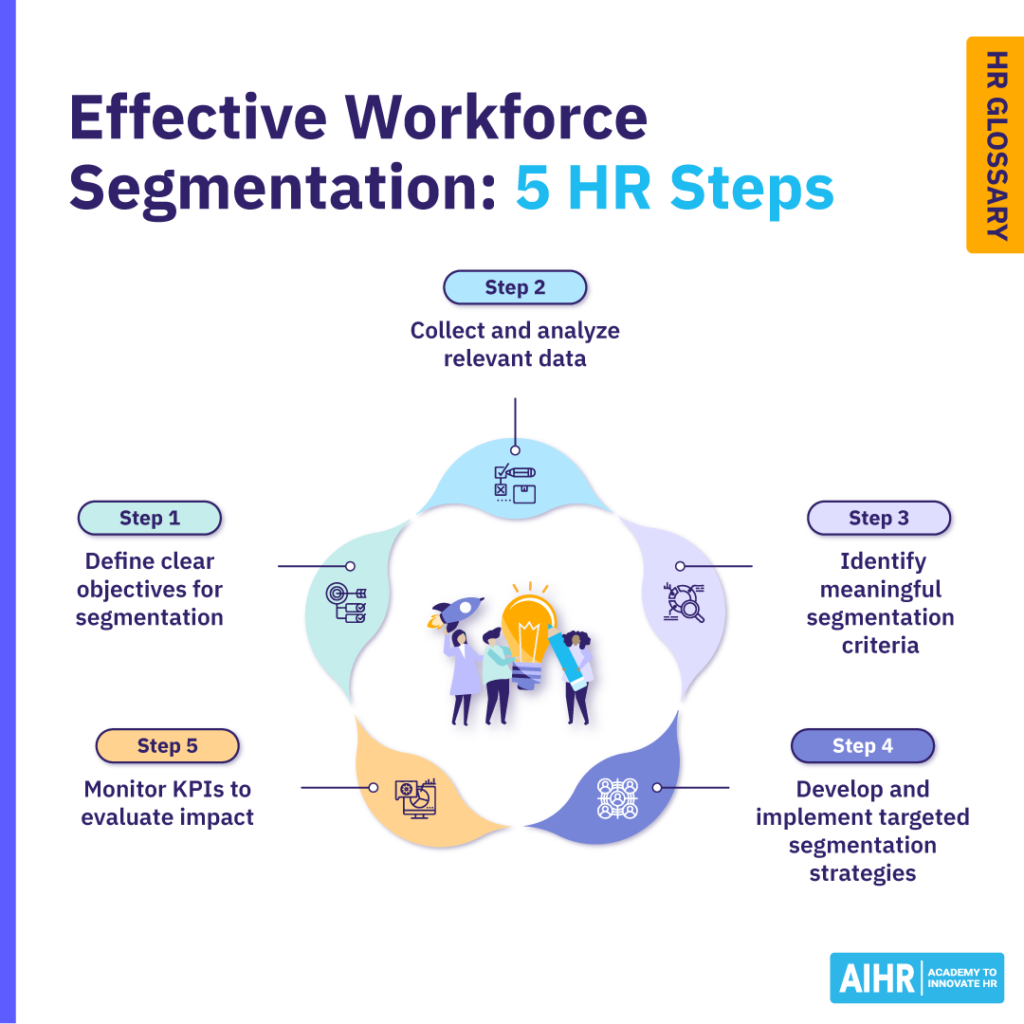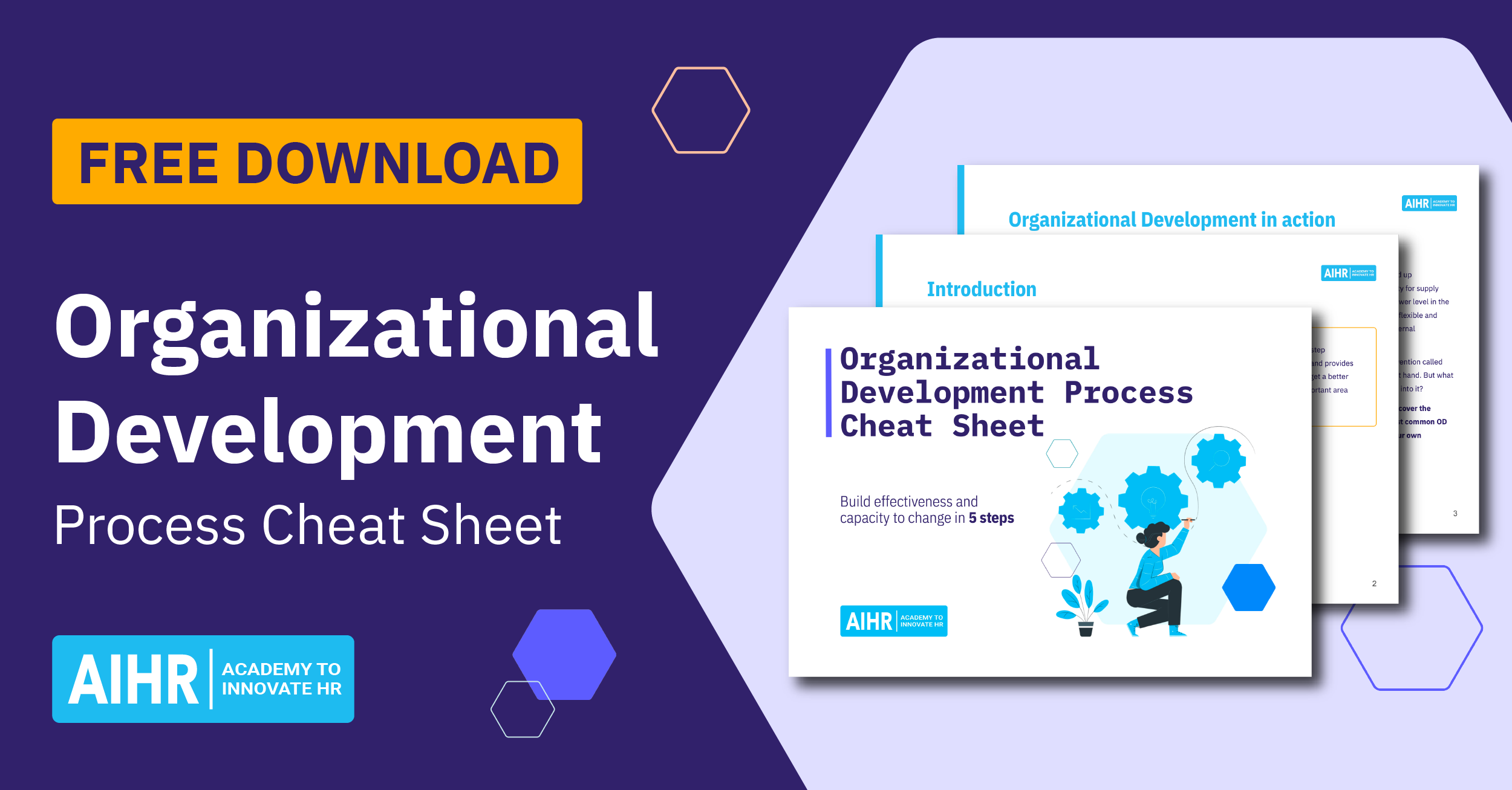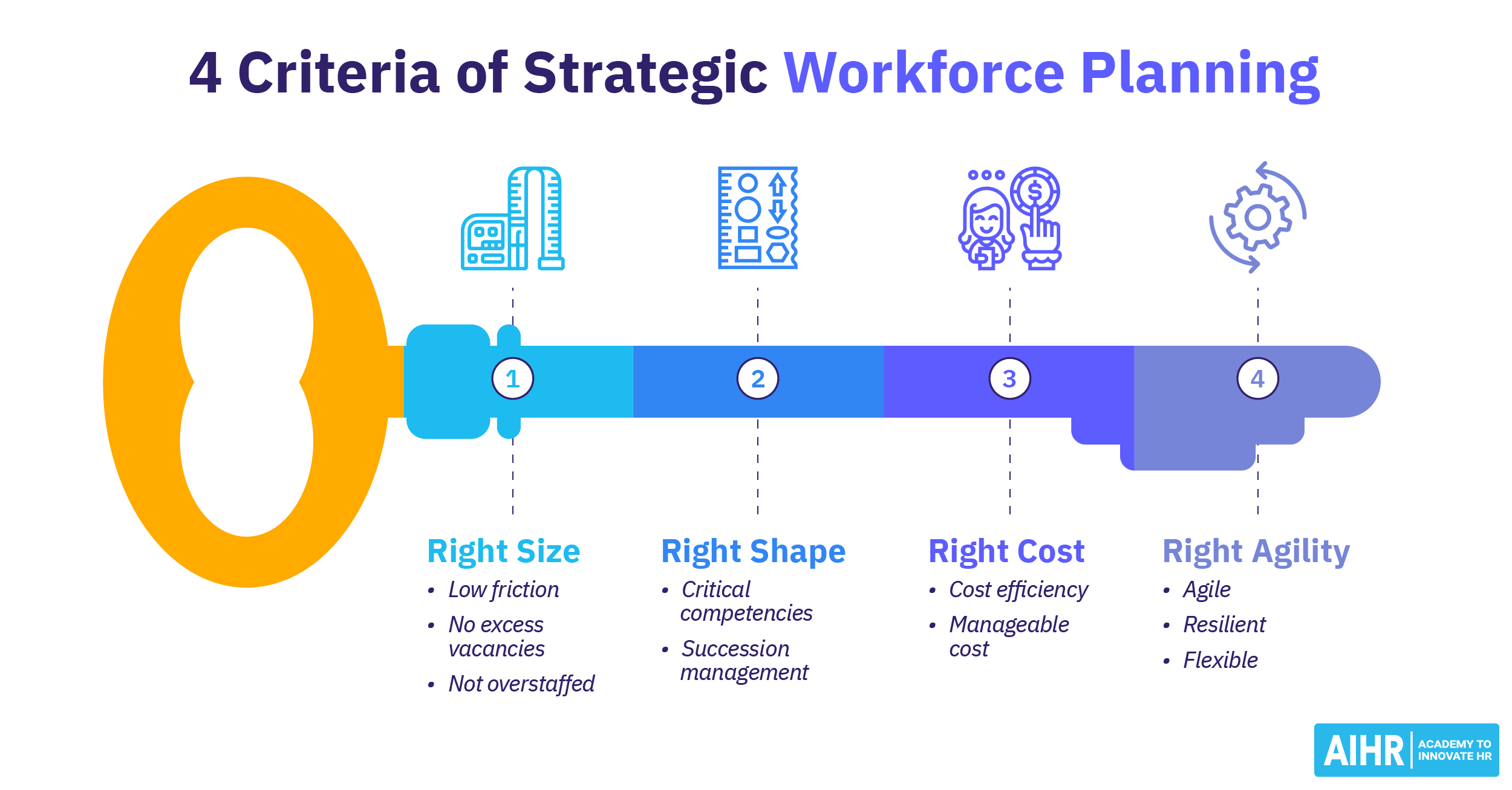Workforce Segmentation
What is workforce segmentation?
Workforce segmentation is the process of dividing an organization’s employees into distinct groups based on shared characteristics, such as skills, job roles, performance levels, location, or employment type. The goal is to better understand and manage different segments of the workforce to optimize productivity, engagement, and overall business performance.
Why is workforce segmentation important?
Workforce segmentation is important because it allows organizations to manage their employees more strategically by recognizing and addressing the unique needs, motivations, and contributions of different workforce groups. Here’s why it matters:
- Identifying and addressing diverse employee needs: By segmenting employees based on their needs and preferences, you can gain a better understanding of the types of programs, processes, and policies that would appeal to them.
- Enhancing performance through targeted initiatives: Understanding specific employee characteristics reveals what drives peak performance, allowing organizations to create the right conditions for employees to excel.
- Improving employee retention by personalizing support and opportunities: Tailored career plans, training programs, and development opportunities foster job satisfaction and reduce turnover by showing employees they are valued and supported.
- Enabling better workforce planning: With greater insight into the skills and competencies of different employee segments, you can more easily prepare succession planning, leadership development, and talent acquisition strategies.
- Aligning workforce strategies with organizational priorities: Workforce segmentation ensures that HR and talent strategies support broader business objectives by engaging diverse employee groups effectively.
Common workforce segmentation methods
Organizations often use these core workforce segmentation methods to better understand and manage their diverse employee base:
1. Role-based segmentation
Grouping employees based on their roles or functions to better understand the specific requirements, challenges, and needs of each role in the organization.
- Example: Engineers, sales representatives, marketing professionals, and customer support staff.
- Why it matters: Different roles often require tailored training programs, performance metrics, and career development paths.
2. Skill-based segmentation
Segmenting employees according to their competencies and skills helps identify talent gaps, design training programs, and create career development plans.
- Example: Entry-level technicians, mid-level project managers, and senior data scientists.
- Why it matters: Employees with specialized skills may need focused development programs or succession planning.
3. Geographic segmentation
When organizations operate across multiple locations, workforce segmentation by region, state, or country helps address local labor market conditions, cultural differences, and employee preferences.
- Example: On-site teams in New York, remote employees in California, and offshore teams in India.
- Why it matters: Policies, benefits, and communication strategies may need to be adapted to fit local norms and regulations.
Learn the skills you need for effective workforce planning
Effective workforce segmentation and planning is a crucial HR skill that requires analytical skills, data interpretation abilities, and a strong understanding of workforce dynamics.
In AIHR’s Talent Management and Succession Planning Certificate Program, you’ll learn to use data and reports to optimize workforce management.
This online, self-paced Certificate Program will also teach you how to use talent segmenting and demand forecasting to support workforce planning for your organization.
4. Tenure-based segmentation
Distinguishing employees based on their time at the organization offers insights into engagement, retention, and succession planning strategies.
- Example: New hires, employees with 3-5 years of service, and long-tenured employees with over 10 years.
- Why it matters: New hires may need comprehensive onboarding, while long-tenured employees might benefit from mentoring opportunities or leadership training.
5. Performance-based segmentation
Using performance metrics to group employees by high, average, and underperformance helps address productivity gaps and reward top talent effectively.
- Example: High-performing sales executives, average-performing administrative staff, and underperforming technical support agents.
- Why it matters: High performers may require leadership opportunities, while underperformers might need targeted coaching or improvement plans.
6. Schedule segmentation
Focusing on different work schedules—such as full-time, part-time, hybrid, or remote workers—helps design policies, benefits, and incentives suited to each group.
- Example: On-site full-time employees, hybrid marketing staff, and fully remote IT professionals.
- Why it matters: Each group may have unique needs regarding flexibility, communication tools, and benefits.
Challenges in implementing workforce segmentation
Although workforce segmentation can offer many benefits, organizations may encounter some obstacles along the way. Here are some common challenges:
- Data accuracy and availability: Effective segmentation relies on accurate, up-to-date data about employees’ skills, performance, and preferences. Inconsistent or incomplete data can undermine the results.
- Employee resistance: Employees and managers may resist segmentation initiatives if they perceive them as unfair, overly rigid, or misaligned with their roles and contributions.
- Over-simplification: Grouping employees into broad categories might overlook unique skills, motivations, or contributions, leading to generalized strategies that fail to address individual needs.
- Bias and inequity: Poorly designed segmentation models may unintentionally reinforce biases or create unequal opportunities for certain employee groups.
HR tip
Remember that employees often fit multiple segments, which may impact segmentation data. It’s important to consider how other criteria, such as certain demographics, career goals, and individual needs. Taking a holistic approach to segmentation can help you have an even more comprehensive overview.
5 steps to take for effective workforce segmentation
Here is a step-by-step approach HR teams can use to conduct a successful workforce segmentation process:
- Step 1: Define your goals. Start by identifying what you want to achieve with workforce segmentation. Whether your goal is to improve employee engagement, optimize training programs, or enhance workforce planning, having well-defined objectives ensures clarity and focus throughout the process.
- Step 2: Collect and analyze relevant data. Choose meaningful criteria that align with your objectives. Common factors include job roles, skill sets, experience levels, performance metrics, work styles, or geographic location. Selecting the right criteria ensures the segmentation is both relevant and actionable.
- Step 3: Identify meaningful segmentation criteria. Gather accurate data from multiple sources, such as HRIS platforms, employee surveys, performance reviews, and engagement metrics. Ensure data accuracy, consistency, and compliance with privacy regulations.
- Step 4: Develop and test segments. Create distinct employee groups based on the chosen criteria and test them for clarity and practicality. Refine segments if they are too broad, overlap significantly, or fail to deliver meaningful insights.
- Step 5: Monitor KPIs to evaluate impact. Track key performance indicators (KPIs) to measure the effectiveness of your segmentation strategies. Metrics such as employee engagement scores, productivity levels, and retention rates can help assess whether your approach is delivering the desired outcomes. Regular reviews allow for necessary adjustments to keep the strategy relevant.










